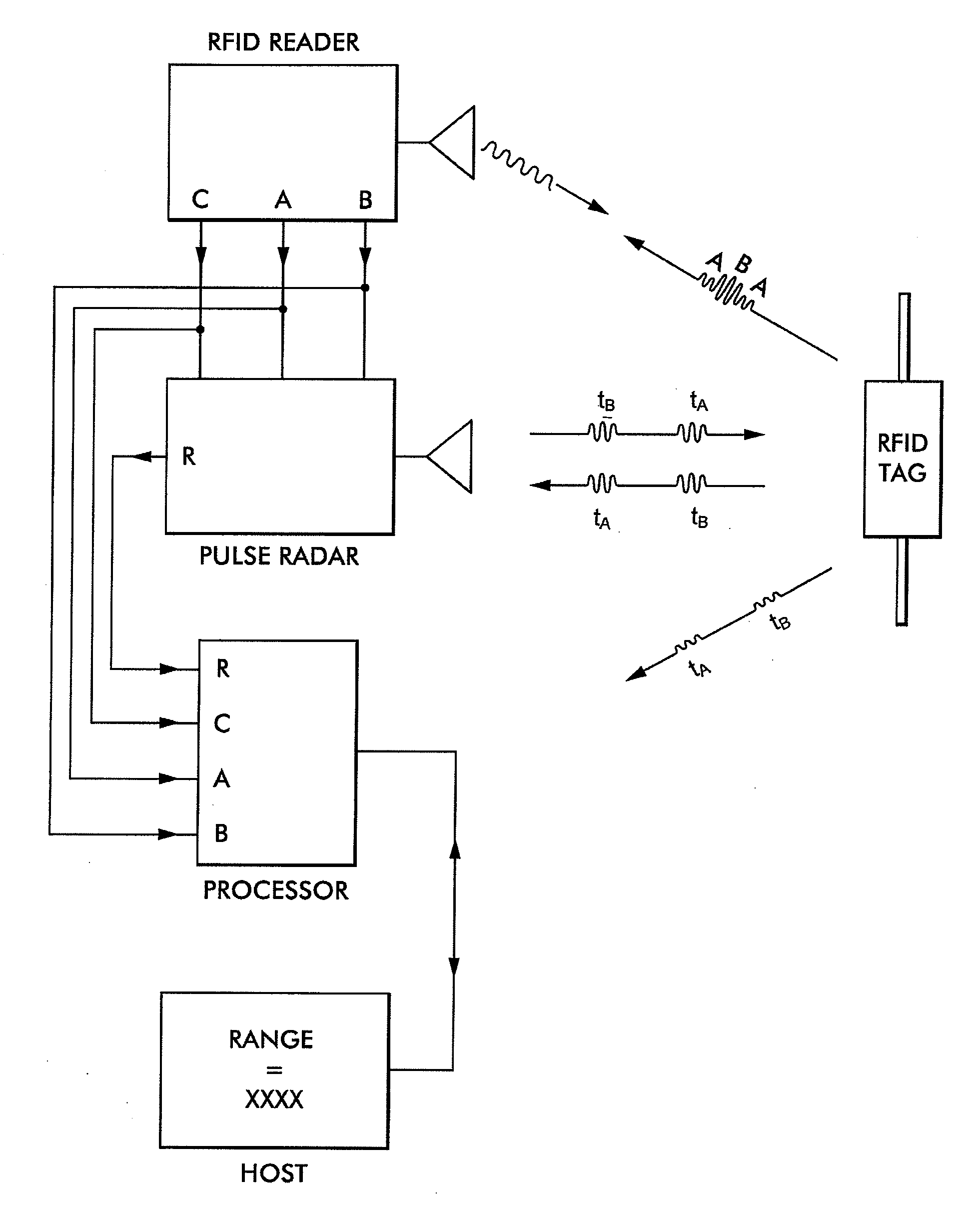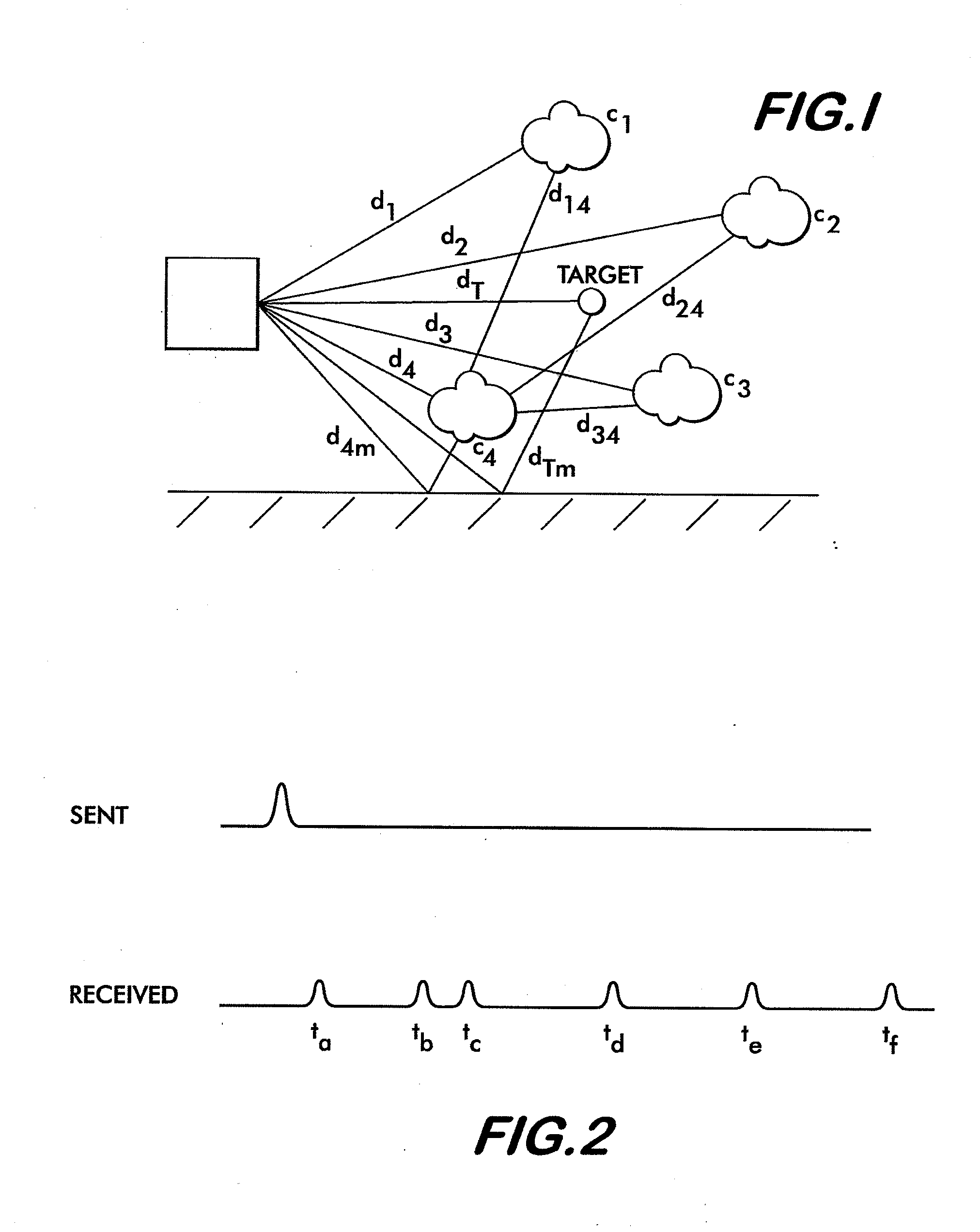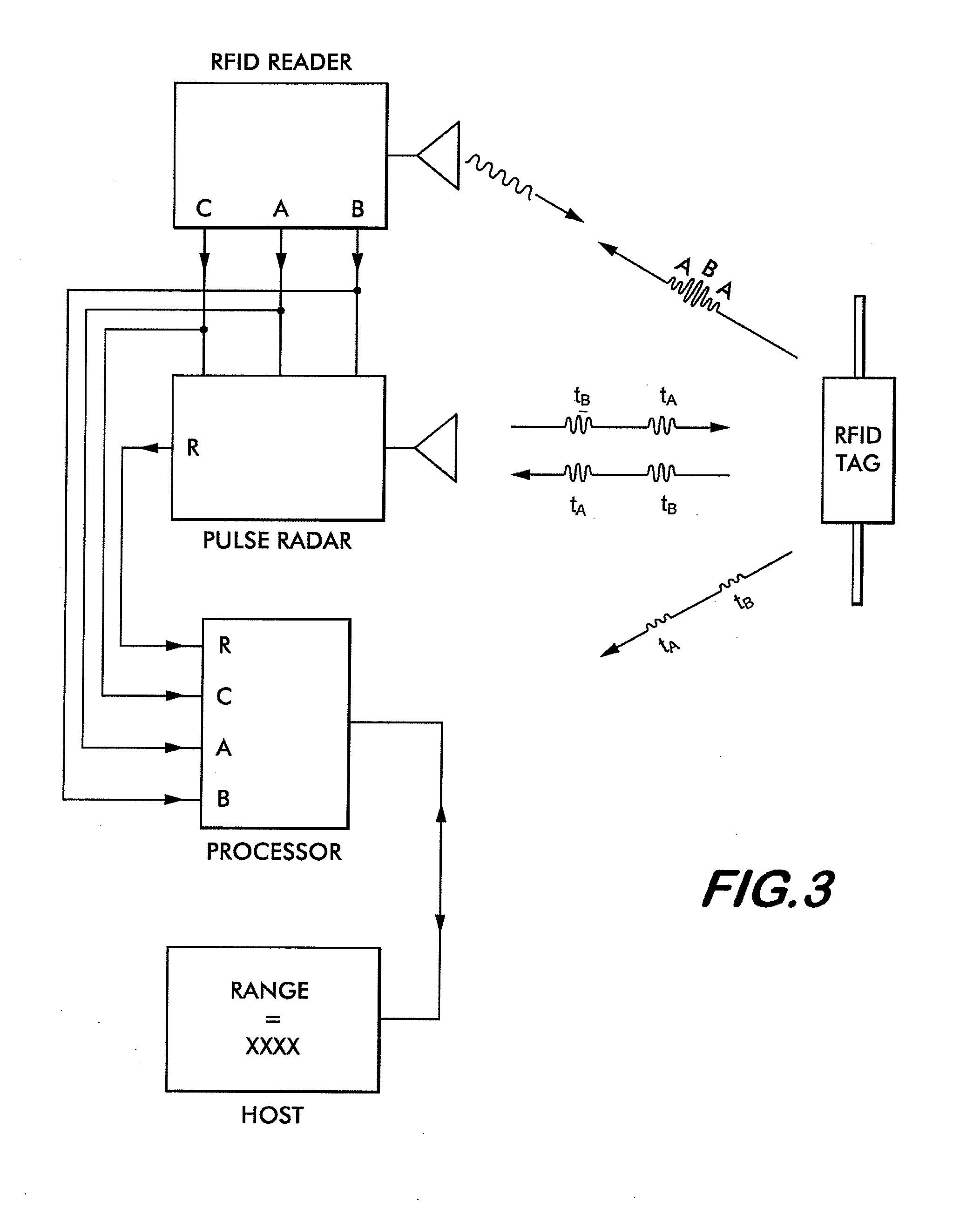System and method for microwave ranging to a target in presence of clutter and multi-path effects
a microwave range and clutter technology, applied in the field of electromagnetic distance measurement, can solve the problems of limited bandwidth of transmitted pulses, multipath effects, and difficult isolation of individual targets, and achieve the effect of high clutter
- Summary
- Abstract
- Description
- Claims
- Application Information
AI Technical Summary
Benefits of technology
Problems solved by technology
Method used
Image
Examples
example 3
[0119]Methods shown in Example 1 and Example 2 illustrate the technique of differential pulse compression radar to measure the distance to a tag in the presence of clutter and multipath. Example 2 also shows the ability of the methods to suppress amplitude noise as shown in FIG. 6b through FIG. 6g. Implementation of the methods are improved by consistency in timing, frequency and amplitude and minimizing jitter of the transmitted radar pulses and subsequent data processing. An improved differential pulse compression radar is shown in FIG. 7. The RFID Reader, Host and data processing sections of FIG. 3 have been omitted for clarity.
[0120]Operation is performed using a minimum set of signals. First, timing is derived from a signal (from a reader or other source) indicting the modulation state of the tag being read. An example of such a signal is the “TAG MODULATION STATE” of FIG. 4 and “Modulation State from Reader” on FIG. 7. Further referring to FIG. 7, Signal Generator 1 (Agilent M...
example 1
OFDM Example 1
[0135]The first OFDM example uses the ‘short training sequence’ symbol of IEEE Std 802.11-2007 Paragraph 17.3.3 equation 17-6 (also known as IEEE 802.11a). This OFDM symbol contains 12 subcarriers spaced 1.25 MHz apart. For illustration of the invention, the subcarriers are up converted by 65 MHz resulting in subcarriers from 57.5 MHz to 72.5 MHz with the center subcarrier missing (at 65 MHz). This signal could be used as the output of the arbitrary waveform generator ARB 2 (or equivalent) in FIG. 8. This band is the chosen intermediate frequency (IF) band for this example. An actual 802.11a system would further up convert the signals to the chosen band in the UNII service (a 5.8 GHz band) for transmission and reception. An RFID system would further up convert to the desired band such as from 907.5 MHz to 922.5 MHz centered at 915 MHz with the frequency of the Signal Generator 1 at the chosen 850 MHz in FIG. 8.
[0136]The short training sequence symbol repeats in 800 nan...
example 2
OFDM Example 2
[0139]The second OFDM example uses a Barker code to set the phase on each of 13 subcarriers. Barker codes have unique correlation properties and are often used in digital communication systems. The phase of each subcarrier was set to 90 degrees or −90 degrees depending on the Barker code. The 13 element Barker code is +1+1+1+1+1−1−1+1+1−1+1−1+1. The frequency separation was set to 2 MHz and the IF center frequency to 65 MHz. The resulting IF bandwidth is from 53 MHz to 77 MHz. When further upconverted by 850 MHz, the transmitted signals are in the range from 903 MHz to 927 MHz.
[0140]The signal strength varies little throughout the period of the signal as shown by the magnitude of the IF signal in FIG. 12a. The signal repeats in at a period of 500 ns in an alternating fashion. Thus, the particular signals of this example have a range multiplicity for delays greater than 500 ns, or a range greater than about 250 feet. The magnitude of the FFT of the IF signal is shown in...
PUM
 Login to View More
Login to View More Abstract
Description
Claims
Application Information
 Login to View More
Login to View More - R&D
- Intellectual Property
- Life Sciences
- Materials
- Tech Scout
- Unparalleled Data Quality
- Higher Quality Content
- 60% Fewer Hallucinations
Browse by: Latest US Patents, China's latest patents, Technical Efficacy Thesaurus, Application Domain, Technology Topic, Popular Technical Reports.
© 2025 PatSnap. All rights reserved.Legal|Privacy policy|Modern Slavery Act Transparency Statement|Sitemap|About US| Contact US: help@patsnap.com



